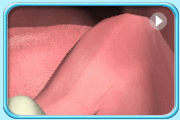

Tooth decay
The bacteria in the cavity of a decayed tooth cause inflammation of the pulp tissues, stimulating the nerves in the pulp.
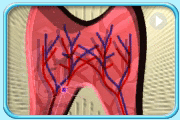
Exposure of dentine
There are numerous microscopic tubules in the dentine which connect to the pulp. If these tubules are exposed because of the gum recession or severe tooth wear (e.g. abraded by toothbrushing or eroded by acidic food and beverages), the tooth will become sensitive, and pain will be elicited in the nerves of the pulp through these tubules when the tooth is stimulated by cold, hot, sweet or sour food or drinks.
At the same time, the acid released by the dental plaque may also stimulate the nerves in the pulp through the exposed dentine.
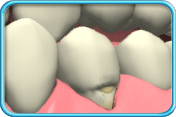 Tooth abraded by toothbrushing
Tooth abraded by toothbrushingFractured Tooth
The exposed dentine and/or pulp tissues resulting from fractured tooth are susceptible to any external stimuli.
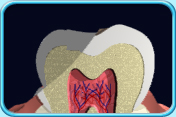
Gum Disease
The toxins released by the dental plaque cause inflammation of the tissues around the tooth.
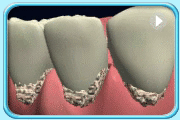
Pericoronitis
Food debris and bacteria are easily trapped in the space between the crown of the wisdom tooth and the overlying gingiva (gum), resulting in the infection of the surrounding tissues (Pericoronitis).
